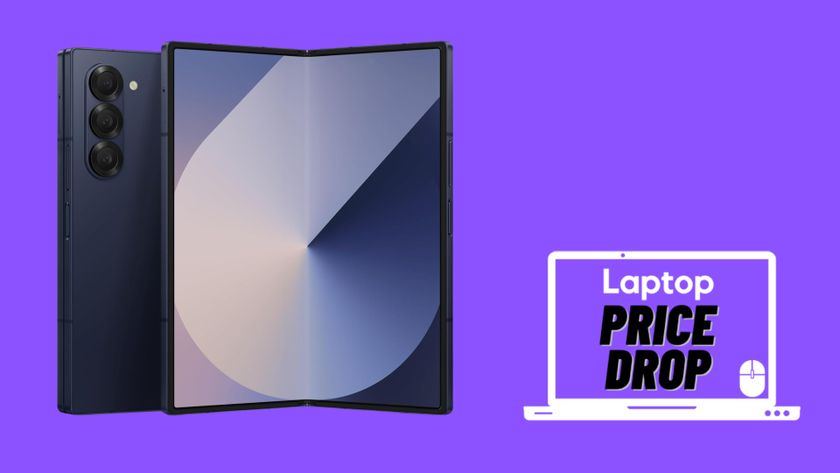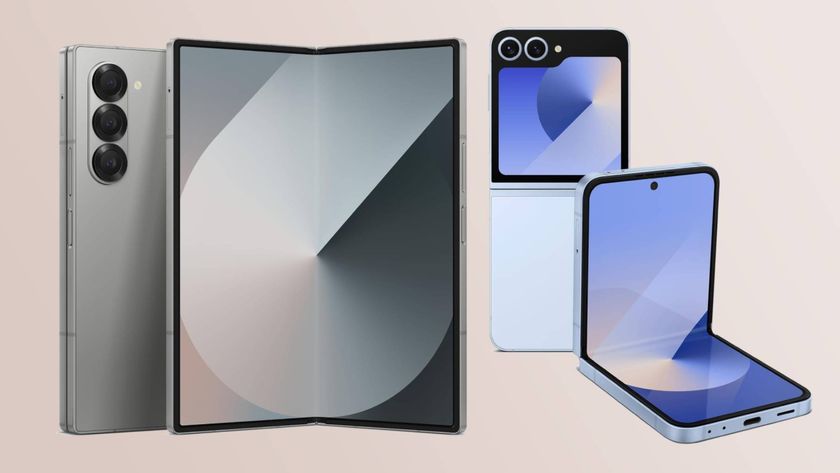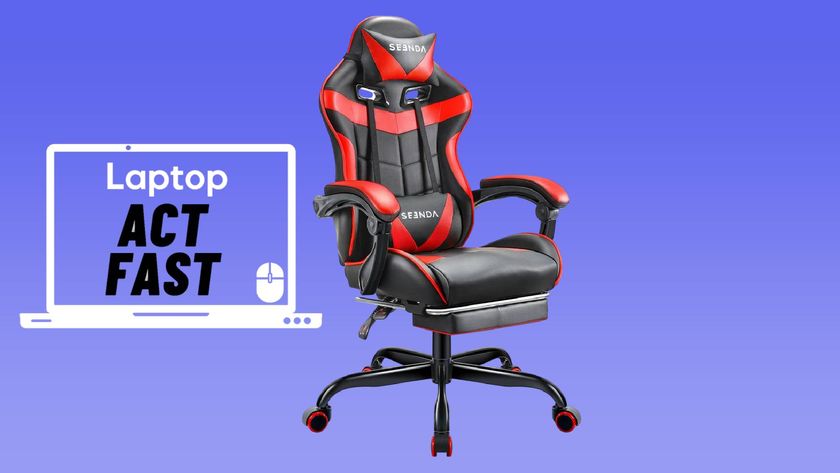Samsung Galaxy Z Flip 3 unveiled at $999 — marking a turning point for foldables
With a significant price drop and across-the-board upgrades, the Galaxy Z Flip 3 5G is aiming for the mainstream market.
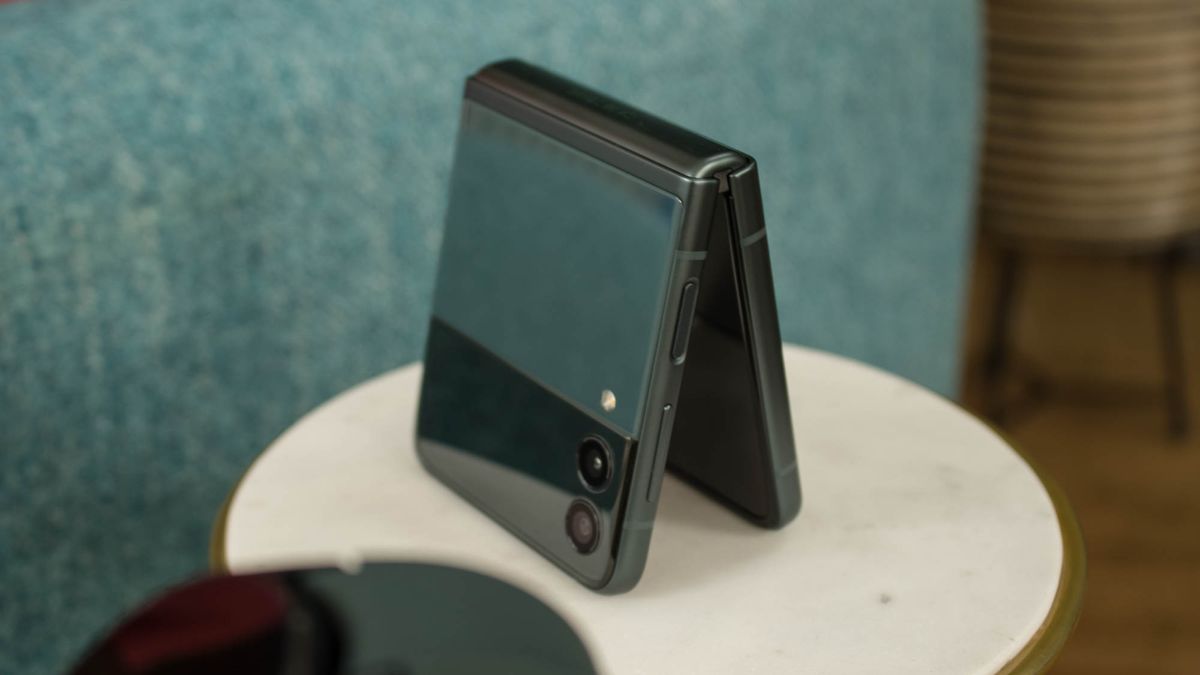
Revealed at Galaxy Unpacked alongside the Galaxy Z Fold 3, the Z Flip 3 is the most affordable foldable yet at $999, matching the Galaxy S21 Plus and iPhone 12 Pro. If lofty pricing wasn't preventing you from purchasing a foldable then upgrades to this vertically folding clamshell may flip your decision.
Tackling display shortcomings is a larger exterior panel showing messages and notifications, and the folding interior screen was upgraded to a 120Hz refresh rate for more fluid navigation. Assuring customers of the long-term durability is IPX8 water resistance, while camera upgrades bring the Z Flip 3 closer to parity with the Galaxy S21. Samsung made a few compromises to keep the price down (sorry, no S Pen support) and we'll need to test the battery life, but the changes made to the Z Flip 3 could signal the mainstream arrival of foldable phones.
- Samsung Galaxy Z Flip 3 vs. Galaxy Z Fold 3: Which foldable is best?
- These are the best smartphones you can buy today
- ...and here are the best phone deals available
Here is everything you need to know about the Galaxy Z Flip 3 including its price, new features and design updates.
Samsung Galaxy Z Flip 3 pricing and availability
Samsung dropped the price of the Galaxy Z Flip 3 to $999, down from $1,449 of the Z Flip 5G. This puts the Z Flip 3 in the same price bracket as premium flagship clamshell phones from Apple and others.
The Z Flip 3 is available for pre-order at Samsung.com today. Those who order between August 11 and August 26 get a $150 Samsung credit. Opting into a 3-year Samsung Care+ plan (which you can cancel at any time) gets you a discount on the plan price and no payments are needed for the first 12 months.
Samsung Galaxy Z Flip 3 specs
| Main display | 6.7 inches FHD+ (2640 x 1080-pixel); 120Hz; 22:9 |
| Cover Screen | 1.9 inches, 512 x 260-pixel |
| 5G support | Yes |
| CPU | Snapdragon 888 |
| RAM | 8GB |
| Storage | 128GB or 256GB |
| Rear cameras | 12MP ultra-wide f/2.2; 12MP wide f/1.8 with OIS |
| Front cameras | 10MP f/2.4 (cover) |
| Battery capacity | 3300mAh |
| Water resistance | IPX8 (No dust resistance) |
| Colors | Cream, Green, Lavender, Phantom Black; Samsung.com only: Gray, Pink, White |
| Size | 3.4 x 2.8 x 0.67 inches |
| Weight | 6.46 ounces |
Samsung Galaxy Z Flip 3 design
Instead of radically changing the formula, the Z Flip 3 addresses the shortcomings of its predecessor with several crucial tweaks. The headline feature remains the foldable glass screen which folds the phone in half at the vertical hinge — making this a modernized version of the extinct flip phone.
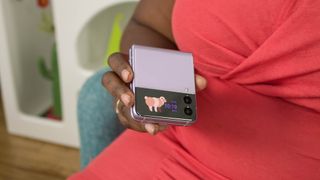
Perhaps the biggest upgrade arrives on the front Super AMOLED display, or Cover Screen, which is now four times larger at 1.9 inches. The extra real estate offers enough room to show full notifications and messages. When opened, the Galaxy Z Flip 3's narrow interior screen measures 6.7 inches, which is unchanged from the previous model.
Stay in the know with Laptop Mag
Get our in-depth reviews, helpful tips, great deals, and the biggest news stories delivered to your inbox.
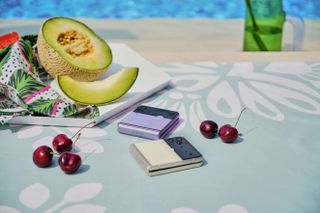
The Z Flip 3 looks similar to its predecessor save from a few minor updates. These include a new camera module with dual lenses positioned vertically, along with the much larger front screen which gives the phone a pleasing two-tone exterior.
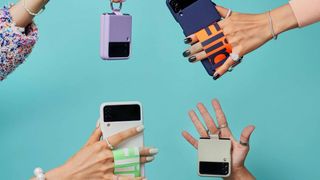
The top panel contrasts against a new range of color options including Cream, Green, Lavender and Phantom Black. For more choices, Samsung.com will sell the Z Flip 3 in Gray, Pink and White. Samsung also designed interesting new ring grip and strap case accessories that act like pop sockets to give you a better grip on the pricey phone.
Why the Galaxy Z Flip 3 works as a concept is its ability to fold into a small, portable package despite having a large display. How small is it? The Z Flip 3 weighs 6.46 ounces and measures 6.5 x 2.8 x 0.27 inches when open and 3.4 x 2.8 x 0.67 inches when folded. So while the thickness more than doubles when folded, the phone's vertical footprint is cut almost in half.
Samsung Galaxy Z Flip 3 durability
The Galaxy Z Flip 3 may use the same blueprint as its predecessor but it brings stronger tools. To that end, the "Hideaway Hinge" is thinner and less noticeable than before, and the bristles inside are shorter to better repel dust and other small particles. We're relieved to see the Z Flip 3 secure an IPX8 water resistance rating, meaning the phone will survive being submerged in deeper than one meter of water.
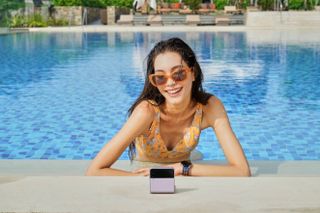
Samsung is tackling durability concerns by using stronger materials this time around; the Z Flip 3 has a custom Armor Aluminum frame — which Samsung claims to be the strongest ever used on a Galaxy smartphone — along with Gorilla Glass Victus, to protect from accidental drops. Moreover, the Z Flip 3 uses a new protective film made of stretchable PET resulting in a screen that is 80% more durable "than previous foldable devices," Samsung claims.
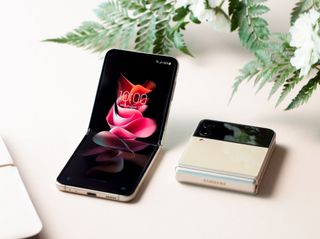
Samsung says the Z Flip 3 (and its Z Fold 3 sibling) withstood 200,000 folds in a stress test verified by Bureau Veritas, which should go some way to reassuring customers of its long-term reliability. Samsung dug itself in a hole with the nightmare launch of the original Galaxy Fold and concrete stats like this one are needed for the Z Flip 3 to have any chance at widespread adoption.
Samsung Galaxy Z Flip 3 displays
The most significant hardware update to the Galaxy Z Flip 3 expands the Cover Screen from 1.1 inches to 1.9 inches, resulting in four times the screen real estate. This makes it easier to view full notifications and messages without having to open to the larger display.
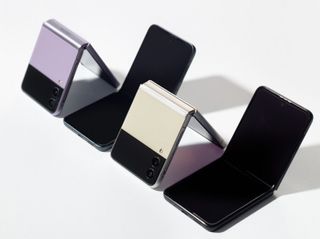
You can now use the 1.9-inch, 260 x 512-pixel AMOLED panel to check the weather, get calendar notifications or even monitor your step count. Better yet, Samsung is bringing new Cover Screen widgets and wallpapers that will match those on your Galaxy Watch4 and Watch4 Classic.
As for the main screen, it remains a 6.7-inch FHD+ (2640 x 1080-pixel) AMOLED display but now with a 120Hz adaptive refresh rate for smoother animations when you're watching videos or playing games. And since it's adaptive, the refresh rate can drop when there aren't any fast movements happening on the screen to conserve battery life.
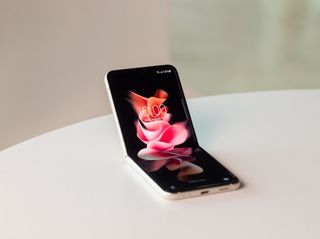
The Z Flip 3 has a hole-punch front-facing camera centered at the top of the screen and misses out on the under-display selfie cam introduced to the Z Fold 3. Yes, this means the folding screen isn't entirely uninterrupted but it's a small price to pay for a camera proven to take good photos.
We'll reserve our thoughts on the Z Flip 3's display until we can get them in for testing. That said, we're in for a treat if the main display is anything like the previous one. For reference, the previous panel covered 142.2% of the DCI-P3 color gamut on its vivid setting or 86.6% on its natural setting. That comes in ahead of the Galaxy S21 Ultra (81.4%) and the iPhone 12 Pro Max (84.8%).
The Galaxy Z Flip 5G also did well in any lighting condition with a max of 677 nits of brightness. While the Galaxy S21 Ultra (821 nits) beats it, the iPhone 12 Pro Max (655 nits) couldn’t keep pace.
Samsung Galaxy Z Flip 3 performance
Powering the Z Flip 3 is a Qualcomm Snapdragon 888 SoC, the fastest chip in any Android phone. Paired with this processor is 8GB of RAM and either 128GB or 256GB of internal storage.
Based on our real-world and benchmark testing, the Snapdragon 888 is powerful enough to run any mobile workload, even when you're running apps on each side of the screen. The 8GB of RAM and 128GB of storage match the previous model but fall short of the 12GB of RAM and 256GB of storage on the Z Fold 3.
Another cost-cutting measure was opting for the Snapdragon 888 instead of the 888 Plus, a chip once rumored to arrive on Samsung's new foldables. Samsung typically picks the Plus-model chips on its AWOL Note series; this omission suggests the company is more worried about bringing down the price of its foldables than providing the absolute fastest speeds.
Samsung Galaxy Z Flip 3 battery life and charging
But will it last you a full day on a charge? We'll find out once we receive a review unit. What we do know is that the Z Flip 3 has a 3,300 mAh battery, which is the same size as the one in the Z Flip.
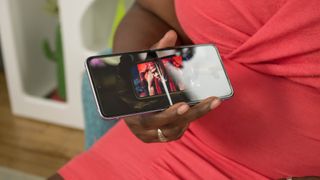
There may be some small endurance gains from the new 5-nanometer processor and software techniques but we're expecting around the same 8 hours and 16-minute runtime as the previous model. That's...not great, but remember, the Z Flip 3's Cover Screen is much larger so you shouldn't need to activate the power-sucking main screen as often.
The Z Flip 3 supports 15W wired fast charging via the USB-C port and 10W wireless fast charging along with 4.5W reverse wireless charging.
Samsung Galaxy Z Flip 3 cameras
No hardware changes were made to the cameras so the Galaxy Z Flip 3 keeps the dual 12-megapixel setup.
Offering a 123-degree field-of-view for landscapes and group photos is a 12MP ultra-wide camera with an f/2.2 aperture and a 1.12μm pixel size. Standard shots are taken on a 12MP wide-angle lens with OIS, an f/1.8 aperture and a 1.4μm pixel size. Samsung says you get 10x digital zoom from the main camera but this is no replacement for a telephoto lens, which is the major omission on the Z Flip 3.
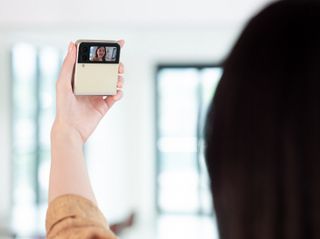
We can expect these cameras to perform similarly to those on the original Z Flip, so expect good, if short-of-class-leading photos. Any hope for improvements to image quality falls on the shoulders of software tweaks and the imaging processor in the Snapdragon 888.
Samsung Galaxy Z Flip 3 software
Samsung provides four years of security updates and three years of major Android updates, both of which are better than what you get from most brands.
Custom software makes Android 11 function on this unique form factor, and delivers new ways of experiencing apps and tools. For instance, with NFC built into the Cover Screen, you can use Samsung Pay without opening the phone. Flex mode, enabled when the phone is partially opened, lets you take hands-free selfies or watch a video on the top half while the controls, like brightness and volume, are on the bottom half.
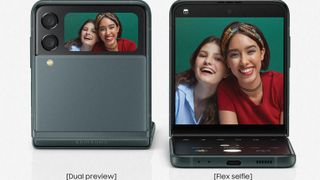
Another way to take a selfie or video is by double-tapping the power button and using the Cover Screen as a viewfinder when the phone is folded closed. And this is only the beginning — Samsung is partnering with Google, Microsoft and others so the most popular Android apps can take advantage of the foldable designs of its Z series phones.
Outlook
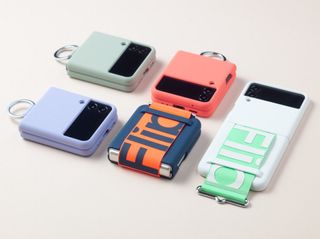
The Z Flip 3 5G is a warning shot to competitors showing how Samsung plans to own the foldables market from the top down. The company isn't just about large margins on expensive devices sold to the richest buyers — it is going after the mainstream audience, and the Z Flip 3 is an aggressive move in that direction.
In some ways, the Z Flip 3 5G feels overshadowed by the Z Fold 3. It lacks S Pen support, there is no under-display selfie cam and the camera setup isn't as flexible as what you get on the Fold. And yet, it's that lack of ambition that could prove to be most compelling to consumers. The Z Flip 3 isn't trying to transform the way you use your phone — it is meant to be an ultra-portable bridge between your current phone and a new world of foldables.
With its reduced sub-$1,000 price, larger Cover Screen and various reassuring durability upgrades, the Z Flip 3 finally puts foldable phones side-by-side against the top flagships and asks customers to choose between years of refinement or an exciting, if uncertain, future.
Phillip Tracy is the assistant managing editor at Laptop Mag where he reviews laptops, phones and other gadgets while covering the latest industry news. After graduating with a journalism degree from the University of Texas at Austin, Phillip became a tech reporter at the Daily Dot. There, he wrote reviews for a range of gadgets and covered everything from social media trends to cybersecurity. Prior to that, he wrote for RCR Wireless News covering 5G and IoT. When he's not tinkering with devices, you can find Phillip playing video games, reading, traveling or watching soccer.

